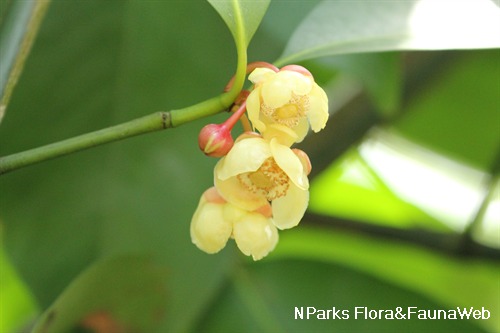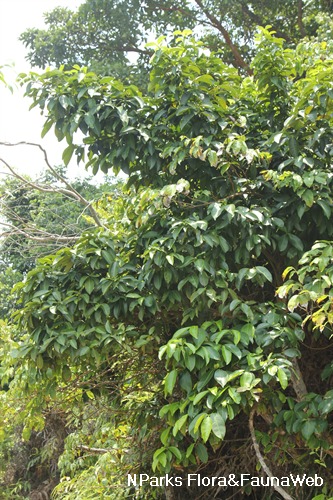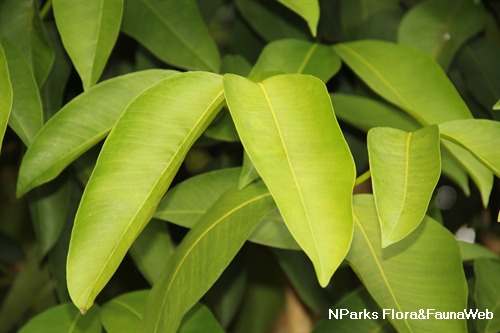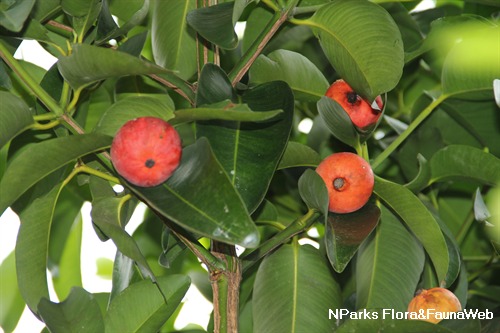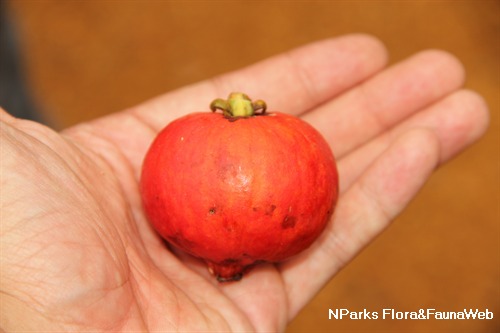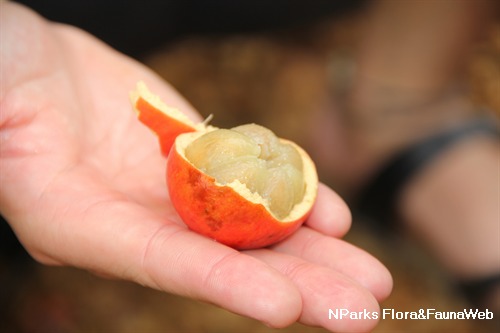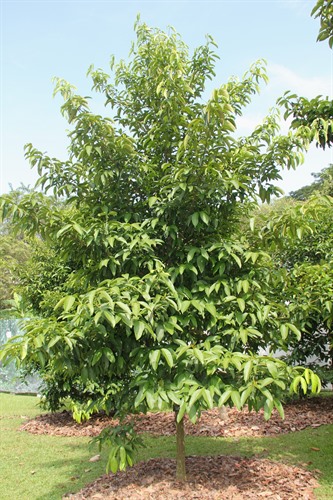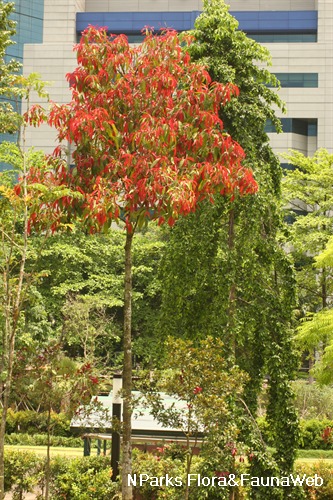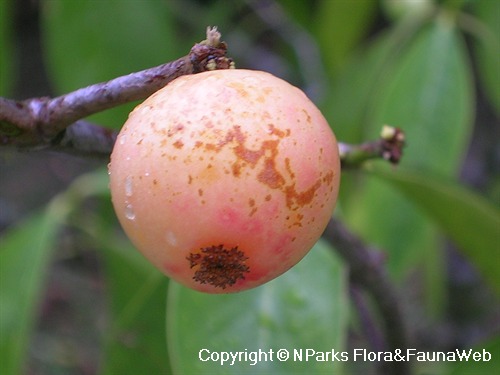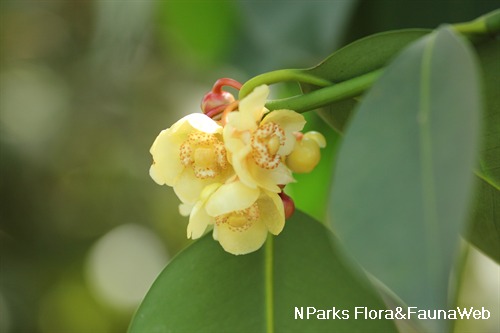
Back
Garcinia celebica L.
| Family Name: | Clusiaceae (Guttiferae) |
| Synonyms: | Garcinia hombroniana Pierre |
| Common Name: | Seashore Mangosteen, Beruas, Manggis Hutan, Minjok |
Name
Classifications and Characteristics
| Plant Division | Angiosperms (Flowering Seed Plants) (Dicotyledon) |
|---|---|
| Plant Growth Form | Tree |
| Lifespan (in Singapore) | Perennial |
| Mode of Nutrition | Autotrophic |
| Plant Shape | Columnar, Irregular |
| Maximum Height | 30 m |
Biogeography
| Native Distribution | Eastern India to Southeast Asia and Papua New Guinea. |
|---|---|
| Native Habitat | Terrestrial (Coastal Forest) |
| Preferred Climate Zone | Tropical |
| Local Conservation Status | Native to Singapore (Endangered (EN)) |
Description and Ethnobotany
| Growth Form | It is a tree, up to 30 m tall. |
|---|---|
| Foliage | Its leaves are oppositely arranged, elliptic to oval-shaped, 6.5-15.5 cm long and 3.5-7.6 cm wide. |
| Flowers | Its flowers have cream white petals, sepals are pink or rose-red outside, cream-yellow inside. |
| Fruit | The fruit is round, bright rose-red when ripe, up to 5 cm wide. The fragrance of the fruit resemble the smell of apples. |
| Others - Plant Morphology | Latex is produced when the plant is bruised or injured. |
| Habitat | It can be found in coastal forests, rainforests, lower montane forests and occasionally on limestone forests. |
| Associated Fauna | Its flowers are pollinated by insects. The fruits are probably eaten by small mammals. |
| Etymology | Latin Garcinia, commemorating Laurent Garcin (1683 - 1751), a French botanist who travelled widely in India. |
| Ethnobotanical Uses | Cultural / Religious: Heritage Tree : There is currently one individual of Garcinia celebica listed as a Heritage Tree in Singapore. It can be found on Sentosa. To find out more about this tree, please visit the Heritage Tree Register. |
Landscaping Features
| Landscaping | It is suitable for planting along streetscapes, parks, gardens, and coastal areas/parks for its dense leafy crown. |
|---|---|
| Desirable Plant Features | Ornamental Fruits, Ornamental Form |
| Landscape Uses | General, Suitable for Roadsides, Parks & Gardens, Small Gardens, Coastal, Beachfront / Shoreline |
Fauna, Pollination and Dispersal
| Pollination Method(s) | Biotic (Fauna) |
|---|---|
| Seed or Spore Dispersal | Biotic (Fauna) |
Plant Care and Propagation
| Light Preference | Full Sun |
|---|---|
| Water Preference | Moderate Water |
| Plant Growth Rate | Moderate |
| Rootzone Tolerance | Moist Soils, Well-Drained Soils, Saline Soils / Salt Spray, Fertile Loamy Soils |
| Propagation Method | Seed |
| Plant Growth Rate Remarks | Slow |
Foliar
| Foliage Retention | Evergreen |
|---|---|
| Mature Foliage Colour(s) | Green |
| Mature Foliage Texture(s) | Leathery |
| Foliar Type | Simple / Unifoliate |
| Foliar Arrangement Along Stem | Opposite |
| Foliar Attachment to Stem | Petiolate |
| Foliar Shape(s) | Non-Palm Foliage |
| Foliar Venation | Pinnate / Net |
| Foliar Margin | Entire |
Floral (Angiosperm)
| Flower & Plant Sexuality | Unisexual Flowers , Dioecious |
| Flower Colour(s) | Cream / Off-White |
|---|
Fruit, Seed and Spore
| Mature Fruit Colour(s) | Red |
|---|---|
| Fruit Classification | Simple Fruit |
| Fruit Type | Fleshy Fruit |
Image Repository
Others
| Master ID | 29078 |
|---|---|
| Species ID | 3392 |
| Flora Disclaimer | The information in this website has been compiled from reliable sources, such as reference works on medicinal plants. It is not a substitute for medical advice or treatment and NParks does not purport to provide any medical advice. Readers should always consult his/her physician before using or consuming a plant for medicinal purposes. |

